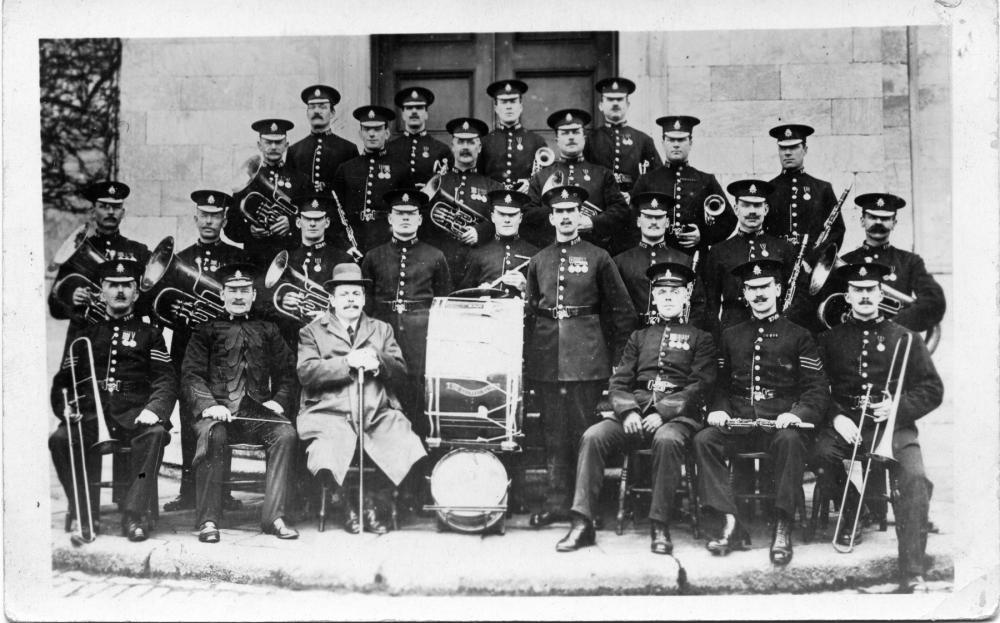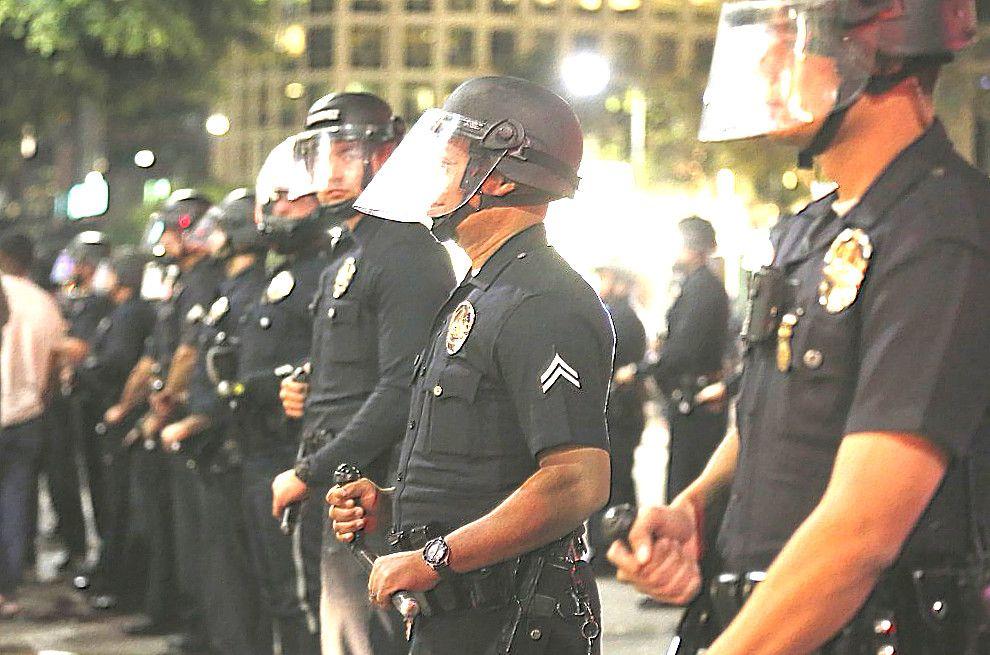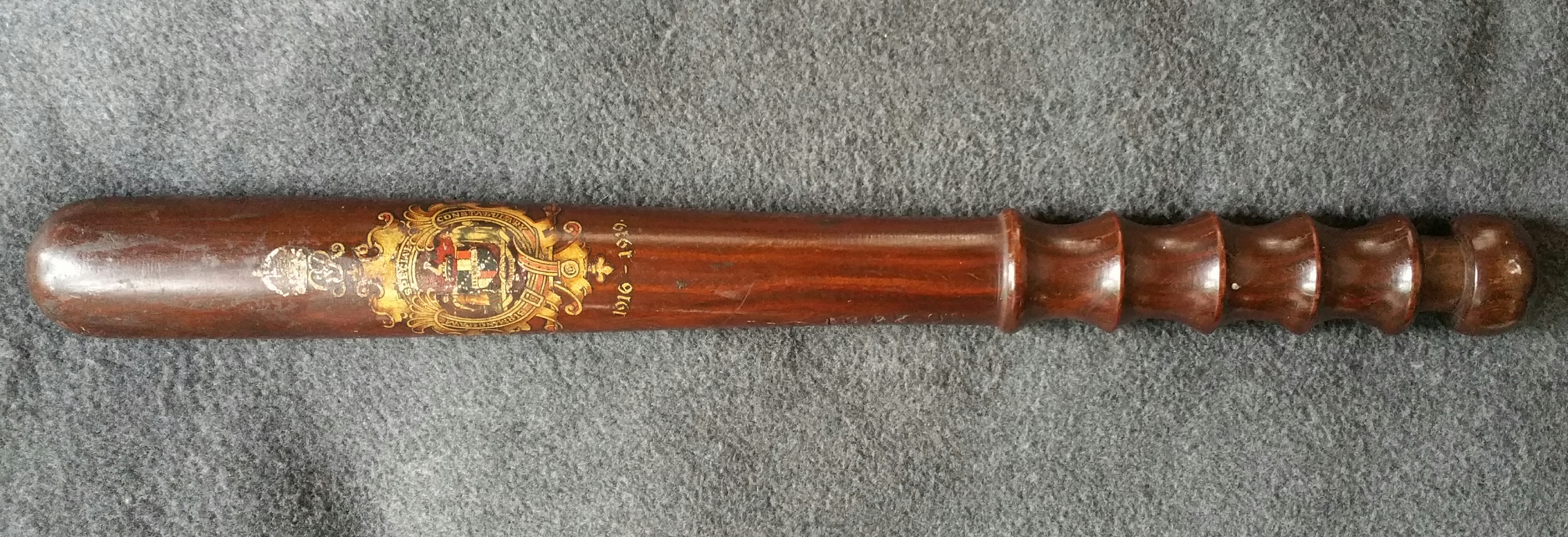
Dave Wilkinson
-
Posts
599 -
Joined
-
Last visited
-
Days Won
7
Content Type
Profiles
Forums
Blogs
Gallery
Events
Store
Posts posted by Dave Wilkinson
-
-
Welcome Iain! Best of luck. I wonder whether the National Archives at Kew will have any info.?
Best wishes, Dave.
0 -
Pete,
That is interesting! The badge on your man's cap looks as if it is in bullion wire. I'd be happier if the NMM badge was in white metal as opposed to brass/gilt. I say that because if it was in white metal it would match the white metal buttons on the tunic. The Metpol. always wore white metal badges pre. 1935 ish apart from the blacked over helmet plates. The badge illustrated would be more likely to be worn by the RN (or similar) rather than police. What do you think?
Dave.0 -
Pete,
I'm attaching a photo of a Metpol. Thames Div. man of the same period as your photo. the wording on his shoulder reads "Metropolitan Police". the jacket is a "reefer" design as opposed to a tunic. In all probability the same pattern cap and reefer would have been supplied from the central clothing store to the Dockyard Divs. for those men who did duty there afloat. I've never seen a specific "dockyard" cap badge and almost certainly the anchor badge (identical to the Thames Div.) would have been worn. The photo of the Metpol. Dockyard badges may be of interest. Shown is an example of the shoulder patch.
Dave.
0 -
I think you will find that he is a bandsman. The various divisions of the Metpol. invariably all had their own band. Although they wore their everyday uniforms their headgear often differed as indeed did the cap badges. These were privately purchased from band funds and were not Metpol. issue as such.
As to the "water branch". They would have worn a very soft peaked cap without stiffening. The badge was a simple fouled anchor in metal. A very ornate cap such as your man is wearing would be totally out of keeping when traversing the waterway of a dockyard but worn by a bandsman would be quite impressive. I have a photograph of a Metpol. member of the Thames Div. wearing a cap such as that described. I will attach it later for your information.
Dave.
0 -
I think you will find that he is a member of the Dockyard Police Band. See the appended group photo of the Devonport Dockyard Met. Police Band which is taken some years, I would suggest, after yours. As you can see, they are all wearing senior officer style caps. Their badge appears to be a KC crowned star with an applied lyre in the centre. I hope this is helpful. Your Pc 52 may indeed be in this photo.
Dave.
0 -
-
The cap badge worn by those sporting peaked caps resembles that worn by the Chinese Maritime Customs Service. The service was widely populated by British expatriate senior officers. I can't see any indication that those depicted are Hong Kong Police officers. I hope this is helpful.
Dave.
0 -
42 minutes ago, Michael Johnson said:
[1930] 2 K.B. 364, [1930] All E.R. Rep. 96 (K.B.) - Sorry but three years of Law School and 28 years in legal publishing, you learn always to give the legal citation for a case.

Michael
Michael,
Many thanks for looking this up for us. Much appreciated!
Dave.
0 -
On 17/01/2017 at 20:44, Polsa999 said:
I think the rules on the use of the crown emblem was governed by the Lord Chamberlains office even in Victoria's period. Having researched the history of railway, dock and canal police for a number of years it is obvious that some were allowed to place the crown on their helmet plates because of their service to Victoria......others just did it! I have not yet seen a Victoria crown on any canal police cap/helmet badge. Any evidence of this would be interesting. Steve
Apropos the use of a crown on a canal company police badge. It would seem that the Regents Canal Company Police used a crown on their helmet plate, presumably the final version prior to their demise.
Dave.
0 -
The matter was decided formally in Fisher v Oldham Corporation 1930. A Constable is an independent servant of the Crown, not the servant of any local authority. Of course there are different views, and differing interpretation of our laws that is why we have a busy court system and seemingly ever wealthy lawyers.
Dave.
0 -
So on the basis of what you say, despite the fact that there is no evidence of a canal police force using the Crown on their badge, if they wanted to do so they could, even without asking. Personally, I don't follow the premise that some railway police forces were "allowed" to put the Crown on their badge because of service to Victoria (the Queen, not the railway station). It has always been the case that persons who are attested as Constables under an enabling Act of Parliament are, whilst executing the duties of that office, Crown servants, irrespective of who paid their wages. Indeed, the wording of the Oath requires the person being sworn to attest that "I will faithfully serve our Sovereign Lady the Queen in the Office of Constable....". That oath alone makes service to the Crown unquestionable and takes primacy over whether a particular railway company's police regularly stood guard over the Royal train or whatever.
The view I take is that it was simply a matter of choice for the individual police force as to whether the Sovereign's Crown was incorporated as part of their insignia. A fair number of the former Borough and County Forces did not utilise "Crowned" badges, nor was there a requirement for them to do so. Having been a member of a non-Home Office police force for some 20 years prior to retirement I can attest to the fact that some of these organisations do get a little, shall we say agitated, about whether they can or can't incorporate the Crown on their badge. Having been privy to written legal advice on the subject, I can confirm that it is a non issue, the basis for which lies in the previous paragraph.
As to the badge under discussion, it probably has no connection with a police force at all and in all probability was utilised by a Government department either at home or overseas. Traditionally, a "chain" is used as part of Customs and Excise insignia and I would lean towards the badge being used by a colonial Customs service or similar. E.g. "British Tientsin Customs"
Dave.
0 -
What I can say is that the badge & medal (the bottom two items) are not related to the City of London Police.
Dave.
0 -
On 24/08/2016 at 21:48, Swainys Boy said:
Lawrence,
This is a "presentation" piece which would have been given to the SC to commemorate his service in the 1st WW. Birmingham City Police became part of the West Midlands Police in 1974. The number on the stick would be his personal force number. They have a museum which is primarily "Birmingham" related in terms of exhibits and paper records. Their personnel records are very extensive and stretch back to the formation of Birmingham Police. Whether that extends to their SC's I'm not sure. If you make an enquiry to the below address you may have some success.
The Curator, West Midlands Police Museum, West Midlands Police HQ., PO Box 52, Lloyd House, Colmore Circus, Queensway, Birmingham B4 6NQ
Dave.
0 -
Yes, I think your deduction is probably correct. At least you have a good indication that he was a Caernarvonshire man. Shame the name is not a more unusual one.
Dave.
0 -
On 30th September 1950, there were five (5) Constables serving in the Caernarvonshire Constabulary named HUGHES:-
John Stanley HUGHES
John Emlyn HUGHES
John Thomas HUGHES
J. HUGHES (no first name given).
J. R. HUGHES (no first name given).
On the same date the Anglesey Constabulary has one Constable serving with that name:-
John HUGHES. He joined Anglesey on 11th March 1939 as Constable 35 at the age of 19 yrs.
He served in the Armed forces 3.9.42 until 17.11.45. At the time of the amalgamation he was serving as a Detective Constable.
I have no final nominal roll for Merioneth. That said, there is a final force photo which is "named" and which may provide a clue. I will make an enquiry and come back to you.
Dave.
PS. For clarification, I should explain that Caernarvonshire, Anglesey and Merioneth Constabularies were the forces who were amalgamated to form the original Gwynedd Constabulary on 1st October 1950.
Just checked the final force photo for Merioneth. Only one Constable named HUGHES. First name began with "E".
Dave.
0 -
I think I'm right in saying that the cardboard box was also used (with typed label) for the "regulars" medal before the introduction of the "posh" case. So, I'm not convinced that the "Gwynedd" box would have contained an SC medal. As to what the numbers are I've no idea. As an aside, the Gwynedd Constabulary was formed in October 1950, so the box can only "date" post that period.
Dave.
0 -
I don't know what the current police regs. say. However, in my time there were a number of "punishments" available one of which was "required to resign". That said, I can recall a number of occasions when a serving member of a police force who was under investigation was allowed/permitted by the Chief Constable to resign ahead of disciplinary proceedings. This obviously saved the cost of preparing for and holding a disciplinary hearing. I take it that your question is in the police context as opposed to the military one, which may differ somewhat.
Dave.
0 -
Since my previous posting on the subject, I am led to believe that Assistant Commissioner Mark Rowley of the Metropolitan Police was awarded his Police Long Service & Good Conduct Medal several years ago whilst serving as Chief Constable of Surrey. I suspect that this is probably the most recent of a number. I'm unsure as to whether at the time he had served 20 or 22 years.
Dave.
0 -
Please remember that the "20 year" provision is a very recent change to the Royal Warrant. I suspect that somewhere there will have been a Special Course (or otherwise) man to have reached the top within 22 years. Also, remember that when the PLS&GC medal was introduced in 1951, all those Chief Constables who were in post on the relevant date and who had 22 or more years approved service would have received a medal. Obviously, all other ranks below would have also received one. It follows that their respective ranks would be engraved as now. In 1951 there were some 127 county and borough police forces in Great Britain, not including the non-Home Office forces. So in theory I would estimate that there are probably 120 or so medals floating about bearing the rank of Chief Constable. This would be in addition to any awarded since the initial 1951 awards.
Dave.
0 -
Get searching. You've got to have one!
Dave.
0 -
Speak to your HR again and ask if they can give you the name of an Officer locally who has recently had such a Welsh engraved medal awarded. A photo of the rim would, I'm sure, be of interest.
Dave.
0 -
Being the politically correct Nation that we are you could bet your life that it would change if it was raised in Parliament by a sympathetic MP. But there again I suppose that it would be difficult to know where to draw the line. Would Welsh MOD employed staff demand a similar preferment in respect of their honours and awards?
Dave.
0 -
4 hours ago, bigjarofwasps said:
Ladies/Gents,
I was pondering the concept of why Welsh forces can't have Cwnst instead of Const for example on the rim of their LSGC's. Surely this would be covered by the Welsh language act? I wonder why it has been approached before, maybe it has?
Anyone got any thoughts or opinions they'd like the share on the matter?
From a collector researching aspect, if would certainly narrow down the field significantly wouldn't it?
Welsh Ranks
Constable - Cwnstabl
Sergeant - Rhingyll
Inspector - Arolygydd
Chief Inspector - Prif Arolygydd
Superintendent - Uwcharolygydd
Chief Superintendent - Prif Uwcharolygydd
Chief Constable - Prif Cwnstabl
This is an interesting concept and I suppose it could be taken one step further than simply showing the rank in Welsh. Why are they awarding medals to Welsh forces which have on them ANY English wording? If the Act applies to showing the rank in Welsh then surely it must apply to the wording on the medal as a whole.
Dave.
0 -
Forgive my saying so, but you are being exceptionally kind in describing John Reginald Halliday CHRISTIE as a "crook". He was, of course a "MURDERER" of the first order many times over. If that were not bad enough, he was content to see a young innocent man, Timothy EVANS, executed for his (CHRISTIE'S) foul misdeeds.
Dave.
0






1919 Police Strike
in Great Britain: Mervyn Mitton's British & Colonial Police Forces
Posted · Edited by Dave Wilkinson
I understand that Merseyside Police have details of all the strikers. However, they are not in the form of a list as such. What they have are several thousands of of index cards which would need to be researched to collate who did and who didn't strike. The key to the issue is to identify which strikers did not return to duty after the Head Constable gave his order to return to duty, and who were later instantly dismissed. Without doubt, at the time (1919) there must have been a list compiled for pay and other purposes. However, it would seem that no longer exists. If you were to examine the Liverpool Watch Committee minutes you will find various mentions of strikers making applications for re-employment and for the grant of pensions post 1919 through (believe it or not) to the 1950's. In Liverpool no striker (after dismissal) was ever re-appointed to the City Police and none were ever given their pension.
As an aside one very young Constable who did go on strike, Joseph William Teesdale SMITH, did return to duty when ordered by the Head Constable. Joe SMITH subsequently became Chief Constable of Liverpool in 1959 and retired in November 1964. How ironic is that?
Dave.